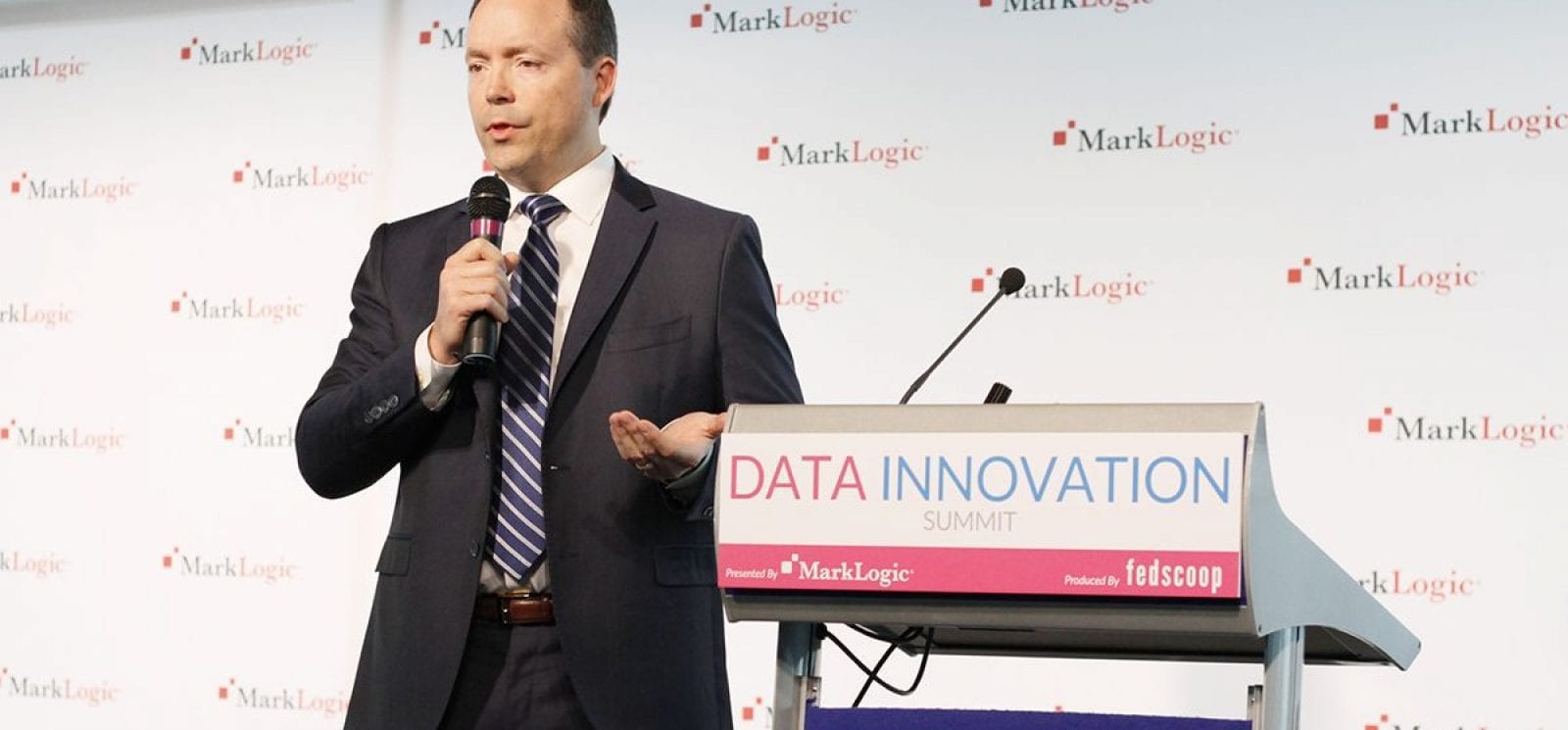Today’s global state of infobesity often leaves us clambering for ways to better integrate and extract value from the astounding amount of data we create and use every day. Government officials and analysts are pressed with the difficult task of making sense of and developing a “big picture” overview of critical information that is stored across disparate data silos – making it difficult to discover and share information at mission speed.
To shine light on the common data challenges plaguing government institutions and to share ideas for solving those problems, MarkLogic hosted Data Innovation Summit 2016 in Washington D.C. on May 18. The summit was a great success – bringing together government and industry leaders for an enlightening and edifying discussion on how organizations can better integrate and discover hidden and inaccessible data to advance collaboration and information sharing among and between organizations.
The Data Innovation Summit brought together top IT leaders and innovators from the Government IT community to address and discuss leading trends in open data and data management technology. With topics ranging from breaking down data silos and the integration of disparate data, to object based intelligence, digital asset management, geospatial and analytics – this year’s summit explored a wide-variety of pressing topics and data-related issues that dominate the daily lives of government leaders at every level.
Highlights From Data Innovation Summit 2016
During the Cyber Challenges of Data Aggregation panel discussion, moderator Amanda Mason, Director, Strategic Programs, MarkLogic, led a conversation around the current challenges with data integration and aggregation with panelists Mark Krzysko, Deputy Director, Acquisition Resources and Analysis, Enterprise Information, DOD, and Robin Thottungal, Chief Data Scientist, EPA. In this discussion, Mark Krzysko spoke of challenges and successes with the integration of siloed data originating from Finance, HR, Personnel and Logistics departments across all the armed services, including Army, Navy, Air Force, Marines, Reserves and the National Guard. And, Robin Thottungal outlined the EPA’s mission to protect human health and the environment and how that necessitates state, local and tribal agencies all work together, standardizing data into a usable format, and the challenge of aggregating data across the nation into a common operational view.
Bill Marion, Deputy CIO, USAF Data presented compelling insights on dark data in Ben Franklin 2.0: Death and Data, an exploration of the unexpected pitfalls of overlooked data that analysts often don’t know exists and certainly aren’t leveraging to the benefit of the enterprise.
In the Decision Support Fireside Chat talk, Chris Barnes, Division Chief, HQDA, G-3/5/7, DAMO-FME, U.S. Army, and Jeff Castro, Capabilities Integration Officer & Information Technology Portfolio Manager, USMC, addressed the challenges and problems wrought by data silos, unsuccessful attempts to integrate data via RDBMS, and the need for greater connectivity to data, including a real-time view at dynamically changing data whenever and wherever.
During the Big Data panel, Dr. Michael Valivullah, CTO, NASS/USDA, underscored the importance of context around big data, stating that without context, big data has no meaning, loses its value, and can lead people to the wrong actions.
The summit’s standing room-only breakout sessions were clearly a big hit with presentations on big data innovation, geospatial and a special session titled, How Healthcare.gov Dared Greatly and Won, led by Henry Chao, former Deputy CIO & Deputy Director, Office of Information Services, CMS/HHS. Henry’s talk was thought-provoking in that it addressed the high degree of risk inherent in any enterprise IT project as well as the importance of a project leader’s ability to correctly assess project requirements and to make decisions based on which technology was going to decrease that risk.
What We Learned From the Experts
Government institutions rely on data every day to make decisions and get results for their constituents and communities. But are they really using all the data they could be using? And, are they getting it fast enough to make a difference? Using legacy technology to manage modern data has led to unbelievable complexity and cost, longer times to achieve mission-critical results, and an inability to act quickly on information. It’s time for government organizations to rethink the way they manage data. Throughout this year’s summit, experts and attendees all spoke to a few shared data requirements, including:
- Innovation. The government needs more innovative ways so capture, share, manage and deliver data – without sacrificing security
- Easier data integration. Agencies and organizations need agile technology that allows for easier data integration across multiple data sources and silos, as well as the means for ensuring the quality and accuracy of information
- Strong stewardship across the lifecycle of the data
With technology developed specifically to manage today’s wide-variety of unstructured data types, MarkLogic database makes it possible to gain a holistic view of critical data and share it for more quickly than ever before.
Take the Discussion to the Next Level
To learn how MarkLogic supports open data and mission critical requirements with real-time, multi-structured data integration for faster delivery of information applications, see our solutions and resources for Government. You can discover and share information at mission speed.

